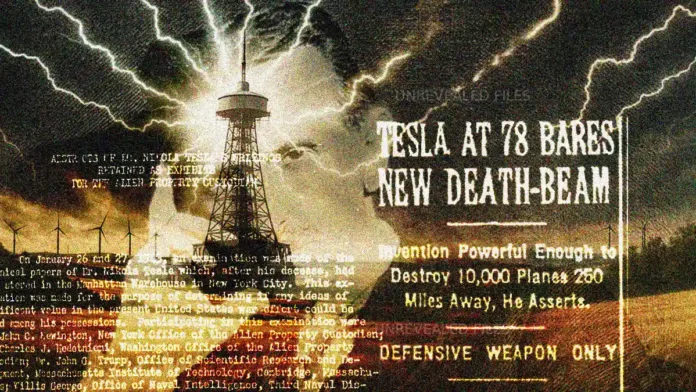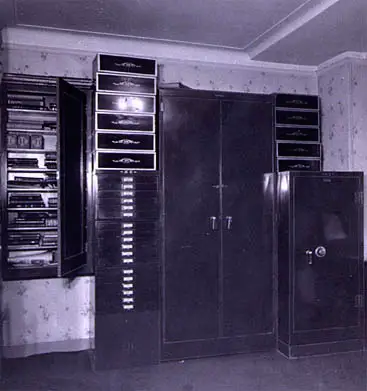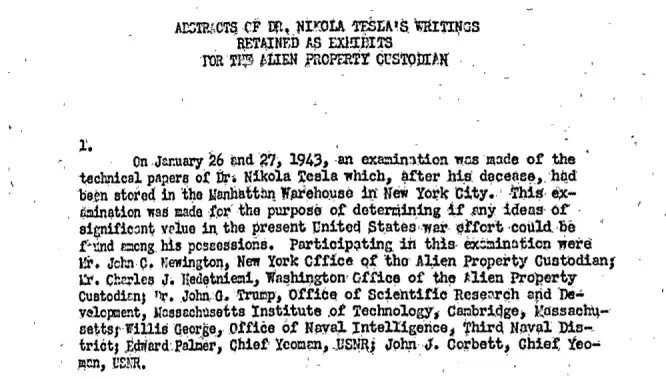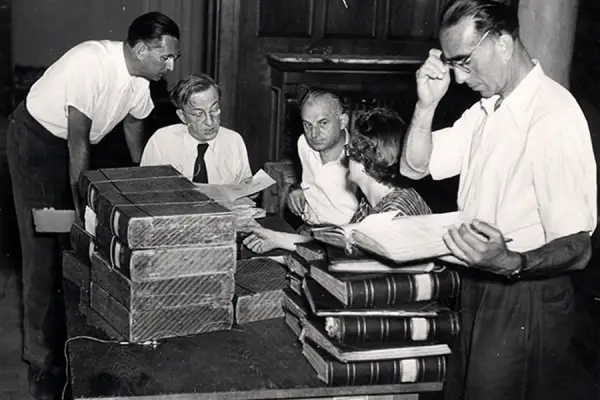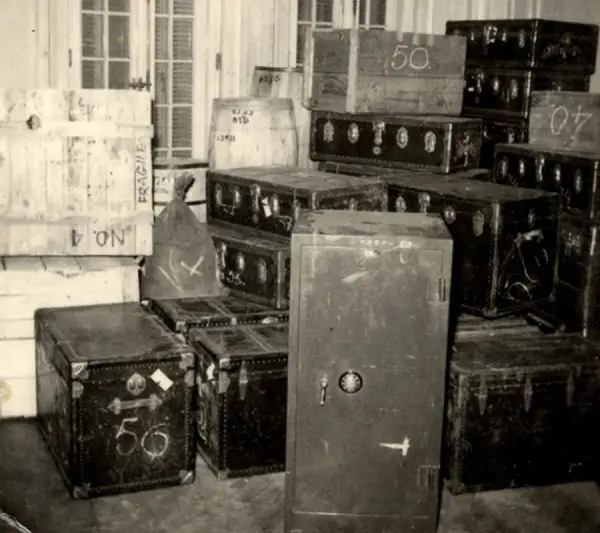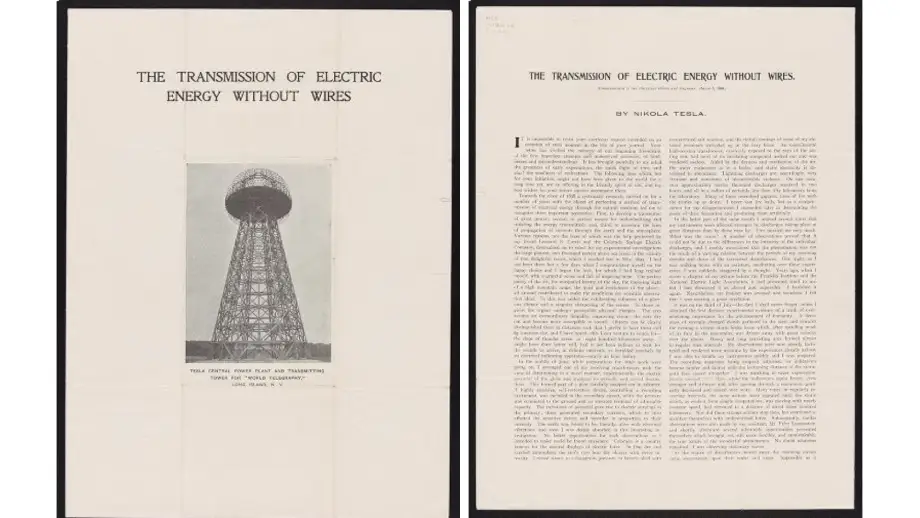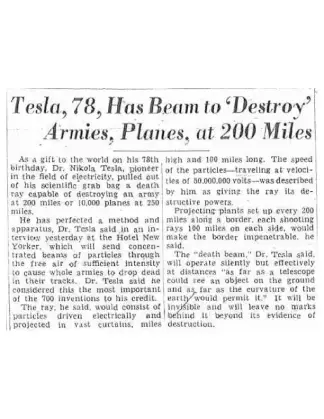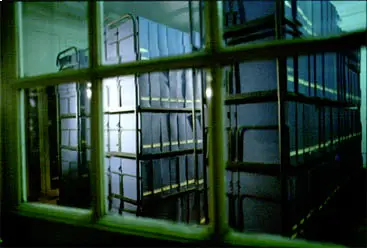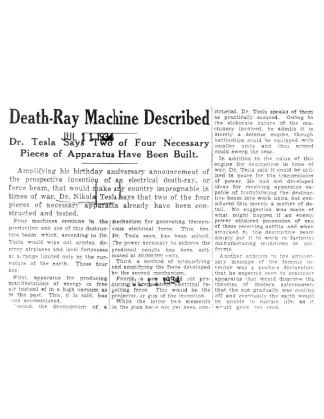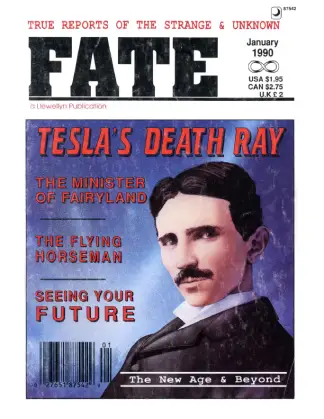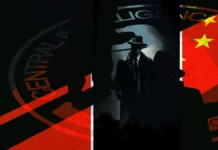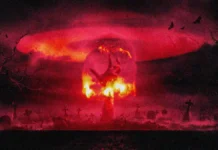Nikola Tesla died on January 7, 1943, in Room 3327 of the New Yorker Hotel. The man who helped shape the modern electrical world left behind not only a legacy of brilliant inventions but also a trail of unanswered questions and mysteries. Within hours of his death, government agents entered his room and removed trunks filled with notes, sketches, and experimental records. Some were returned to his family and later shipped to Belgrade, where they became part of the Tesla Museum. Others vanished without explanation.
This article explores what those papers were, why they were taken, what they might have contained, and why they remain the subject of speculation and mystery.
Contents
Nikola Tesla’s Missing Papers
What were the Papers
Tesla was meticulous. Throughout his life, he filled notebooks with calculations, diagrams, and descriptions of his experiments. These were not casual scribbles. They documented decades of work, some of which had never been published. According to accounts, Tesla left behind dozens of trunks filled with papers by the time of his death. Many were labeled with subjects ranging from electrical oscillators to wireless power transmission. Others were described as containing secret inventions that had never been patented.
What Happened to the Papers
After his death, the Office of Alien Property, acting under wartime authority, seized Tesla’s belongings. Agents packed his trunks and removed them from the hotel. Newspaper reports at the time mentioned two truckloads of material, including a large safe. The seizure created immediate suspicion. Why was the government interested in the private notes of an inventor who had lived in obscurity for years?
Tesla’s nephew, Sava Kosanović, fought to recover the material. Eventually, some trunks were released to him and shipped to Yugoslavia. But the record is uneven. Certain items listed in early inventories never reappeared. The trail of others ends abruptly in government archives.
How and Why the Files Were Taken
The context matters. The world was at war. The American government was racing to develop new weapons and feared that hostile powers might gain access to sensitive research. Tesla had claimed to have invented a powerful weapon, the so-called “Death Ray,” capable of shooting down planes and ending wars. Even if these claims were exaggerated, officials could not ignore the possibility. The seizure of his papers was therefore both an act of precaution and of control.
The Missing Files
The total number of documents Tesla left behind is still debated. The museum in Belgrade today preserves more than one hundred and sixty thousand papers. Yet early accounts suggest there were more trunks than the ones delivered to Yugoslavia. Researchers believe that several key collections never made it across the Atlantic.
The above photographs show Tesla’s personal trunks, crates, and even a safe, all of which were numbered and catalogued after being transferred to Yugoslavia. The chalk-marked numbers (like 50, 56, 40) correspond to the official inventory made when his belongings were packed and shipped from New York to Belgrade in the early 1950s.
These are part of the famous “60 trunks” containing Tesla’s manuscripts, drawings, instruments, and personal effects. They were delivered to his nephew, Sava Kosanović, after years of negotiation with U.S. authorities, and later became the core collection of the Nikola Tesla Museum in 1957.
What might they have contained?
Tesla often spoke about four major areas of late research. First was wireless energy transmission, the idea that power could be sent through the Earth’s atmosphere without wires. Second was the Death Ray, a beam weapon that he claimed could destroy aircraft from hundreds of miles away. Third was his exploration of vibration and resonance, including machines that could shake buildings by matching their natural frequency. Finally, Tesla hinted at systems that would provide free energy to humanity by harnessing the natural forces of the planet.
These subjects appear in his known writings, but his descriptions are often vague. The missing files might have held more precise technical details, enough to allow engineers to test his claims. The fact that they remain missing leaves historians guessing and conspiracy theorists convinced that something was hidden.
(For images of Tesla’s original manuscripts and sketches, you can visit: Nikola Tesla Museum, Smithsonian Institution Archives, and the FBI Vault on Nikola Tesla)
Conspiracy
The mystery of Tesla’s missing papers has given rise to countless theories. Some believe the U.S. government deliberately withheld his most advanced designs to develop them in secret. Others argue that the notes contained instructions for free energy systems that threatened powerful industries built on coal, oil, and electricity monopolies. There are even claims that his work influenced later classified projects connected to radar, missile defense, and possibly unidentified aerial phenomena.
While no hard proof supports these claims, the combination of Tesla’s reputation, his extraordinary announcements, and the disappearance of some of his work makes a conspiracy almost unavoidable. In the absence of full transparency, the imagination fills the gap.
Dr. John G. Trump
To evaluate Tesla’s work, the government relied on an MIT professor named Dr. John G. Trump. He was a respected engineer in high voltage research and radiation technology. After reviewing the seized papers, he concluded that they were speculative and of no practical value. According to his report, Tesla had left behind no working designs for weapons or revolutionary energy systems.
Many accept this assessment at face value. Others suspect it was intentionally understated to keep sensitive research out of public discussion. The fact that Trump was entrusted with such a task demonstrates how seriously the government regarded Tesla’s papers, even if they later claimed to have found nothing of use.
Where Are They Now
Today, most of Tesla’s known papers are housed in the Nikola Tesla Museum in Belgrade. The collection includes personal letters, patents, technical notes, and laboratory records. Scholars have access to much of it, and exhibitions regularly display his manuscripts.
In the United States, the FBI has declassified portions of its files on Tesla, available to the public through the FBI Vault. These include documents on the seizure of his papers, but also reveal how seriously officials considered his claims during the war.
Declassified documents from Nikola Tesla’s FBI file
Still, researchers point out that gaps remain. Inventories do not match perfectly. Some trunks were never delivered to Belgrade. And the safe from Tesla’s hotel room, according to reports, contained manuscripts that have not resurfaced. Whether they were destroyed, locked away, or lost is a question that remains unanswered.
Tesla’s Final Years
Tesla spent the last decade of his life at the New Yorker Hotel. He was old and frail, often feeding pigeons in nearby Bryant Park, yet he never abandoned his visionary spirit. He told journalists and acquaintances that he was close to breakthroughs.
He spoke of wireless energy transmission through the Earth that could deliver power to distant places. He described a Death Ray that could end wars by making entire fleets of bombers useless. He explored new principles of vibration and resonance that, he claimed, could even shake buildings apart. He hinted at systems that might offer free power to humanity, drawn from the natural environment.
To admirers, these were the words of a genius whose mind never stopped reaching for the future. To skeptics, they were the delusions of an old man whose best years were long behind him. The truth may lie somewhere in between. His earlier life proved that he was capable of ideas far ahead of his time. Whether his later visions were achievable or not, they continue to inspire debate and wonder.
Did Tesla Really Build a Death Ray?
In his final years, Nikola Tesla repeatedly claimed he had developed a revolutionary weapon that could change the nature of war forever. He described it as a focused beam of particles that could bring down fleets of aircraft from miles away. The press quickly labeled it the “Death Ray.”
Tesla insisted it was not a conventional explosive weapon but a system based on high-voltage electricity and charged particles. According to his interviews, the Death Ray could project an invisible wall of defense, making any country immune to invasion.
Skeptics dismissed these claims as exaggerations of an aging inventor. Yet the very possibility that Tesla might have recorded technical details of such a device explains why government officials were so interested in his papers. If his Death Ray designs were real, they would have been among the most valuable military secrets of the 20th century.
The mystery is that no complete design has ever surfaced. Were the details lost in the missing papers? Or were they quietly absorbed into secret research programs during the Cold War?
Conclusion
The story of Nikola Tesla’s missing papers is not only about lost manuscripts. It is about the tension between innovation and authority, between a mind that dreamed of limitless possibility and a world bound by politics, war, and profit.
Some of his papers are safe in museums, some have been released through official archives, and some are still unaccounted for. Until the full truth emerges, the mystery will remain. And perhaps that is why Tesla endures. More than eighty years after his death, his legacy is not only the inventions that shaped our world but also the secrets that continue to haunt it.
Sources
- Howard, Cheryl. “Visit The Nikola Tesla Museum In Belgrade, Serbia.” CherylHoward.com, 22 Mar. 2023.
- “Nikola Tesla Museum – History.” Nikola Tesla Museum, 2025.
- “Nikola Tesla Museum.” Wikipedia, Wikimedia Foundation, n.d.
- “Tesla – Master of Lightning: The Missing Papers.” PBS.
- Youvan, Douglas C. “The Legacy of Nikola Tesla: Government Seizure, Secrecy and Speculation.” ResearchGate, 15 Nov. 2024.
- Brown, JPat. “FBI Releases Catalog of Nikola Tesla’s Writings Seized After His Death.” MuckRock, 19 Mar. 2018.
- “Tesla papers.” Smithsonian Libraries and Archives.
- “John G. Trump.” Wikipedia, Wikimedia Foundation, n.d.
- “Nikola Tesla FBI Files – Page 147.” TeslaUniverse.com.
FACT CHECK: We strive for accuracy and fairness. But if you see something that doesn’t look right, please Contact us.
DISCLOSURE: This Article may contain affiliate links and Sponsored ads, to know more please read our Privacy Policy.
Stay Updated: Follow our WhatsApp Channel and Telegram Channel.
